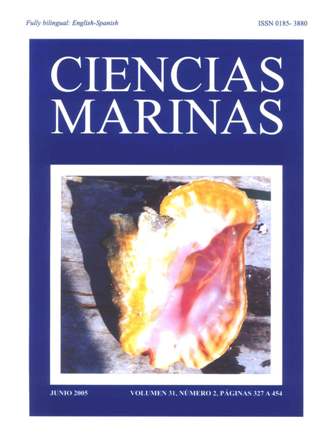Weaning of Senegalese sole (Solea senegalensis) postlarvae to an inert diet with a co-feeding regime
Main Article Content
Abstract
The objective of this study was to evaluate the weaning success of Senegalese sole, Solea senegalensis, postlarvae when cofed a compound diet, by means of the analysis of growth parameters (relative growth rate [RGR] and condition factor [K]), survival, protein and lipid content. Total ammonia in the rearing water was also measured. The experiment lasted for 46 days (36 to 82 days posthatching). One group was fed only with enriched Artemia sp. metanauplii (Artemia treatment), whereas in another group, the Artemia sp. metanauplii were gradually replaced by the International Council for the Exploration of the Sea (ICES) diet over a period of 39 days (ICES treatment). Postlarvae were sampled on rearing days 0, 9, 23, 30, 39 and 46 for growth and biochemical analysis. Water was sampled on rearing day 30 during a 24-h cycle in both treatments. Postlarvae from the ICES treatment were weaned, though by the end of the experiment the Artemia treatment exhibited significantly higher values for growth, RGR, K and survival rates (P < 0.05). No significant differences were observed concerning total lipid content. Protein content was significantly higher for the Artemia treatment after 46 days of rearing (P < 0.05). The total ammonia nitrogen concentration in the water increased after each meal and remained below a harmless level for postlarvae.
Downloads
Article Details

This work is licensed under a Creative Commons Attribution 4.0 International License.
This is an open access article distributed under a Creative Commons Attribution 4.0 License, which allows you to share and adapt the work, as long as you give appropriate credit to the original author(s) and the source, provide a link to the Creative Commons license, and indicate if changes were made. Figures, tables and other elements in the article are included in the article’s CC BY 4.0 license, unless otherwise indicated. The journal title is protected by copyrights and not subject to this license. Full license deed can be viewed here.

